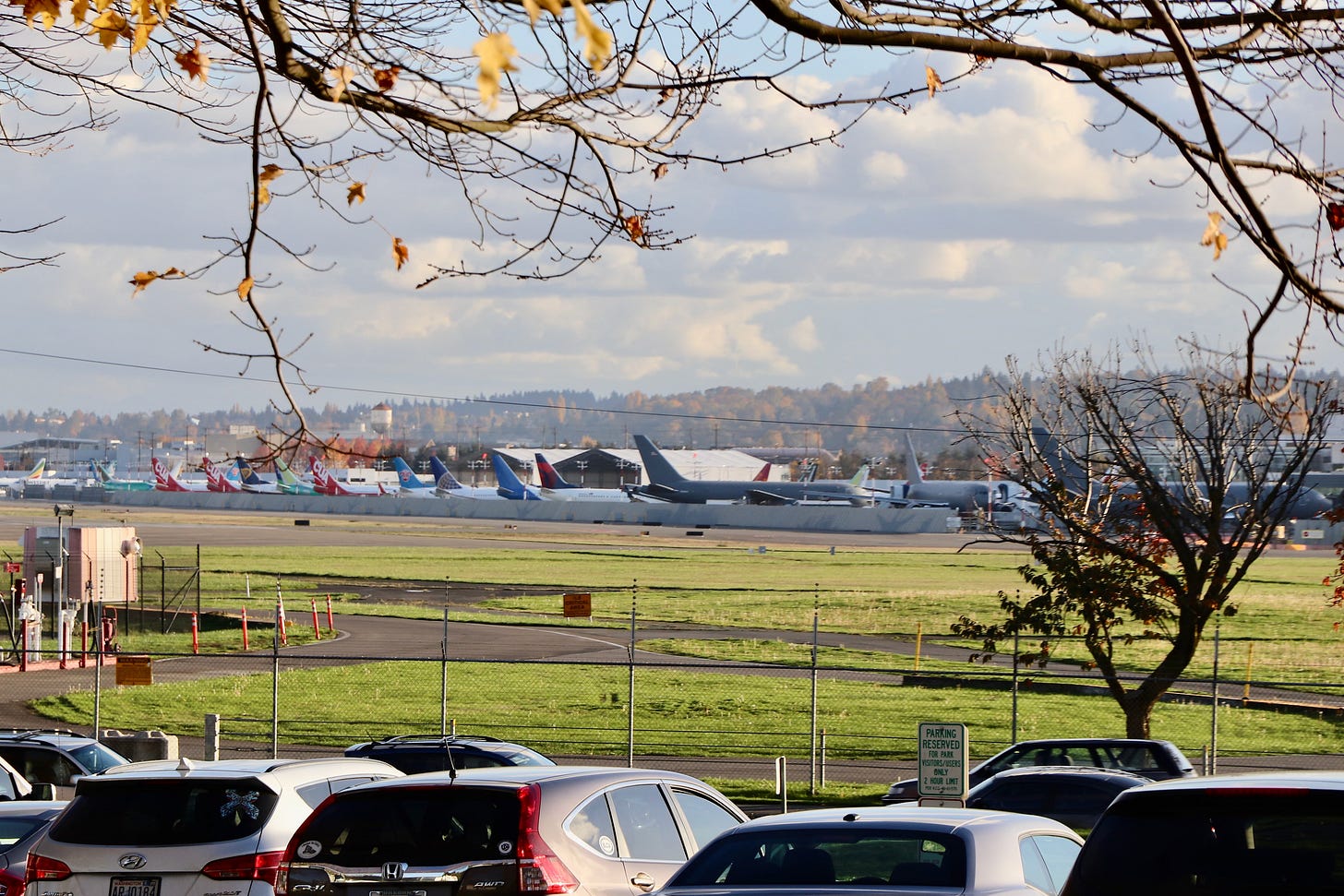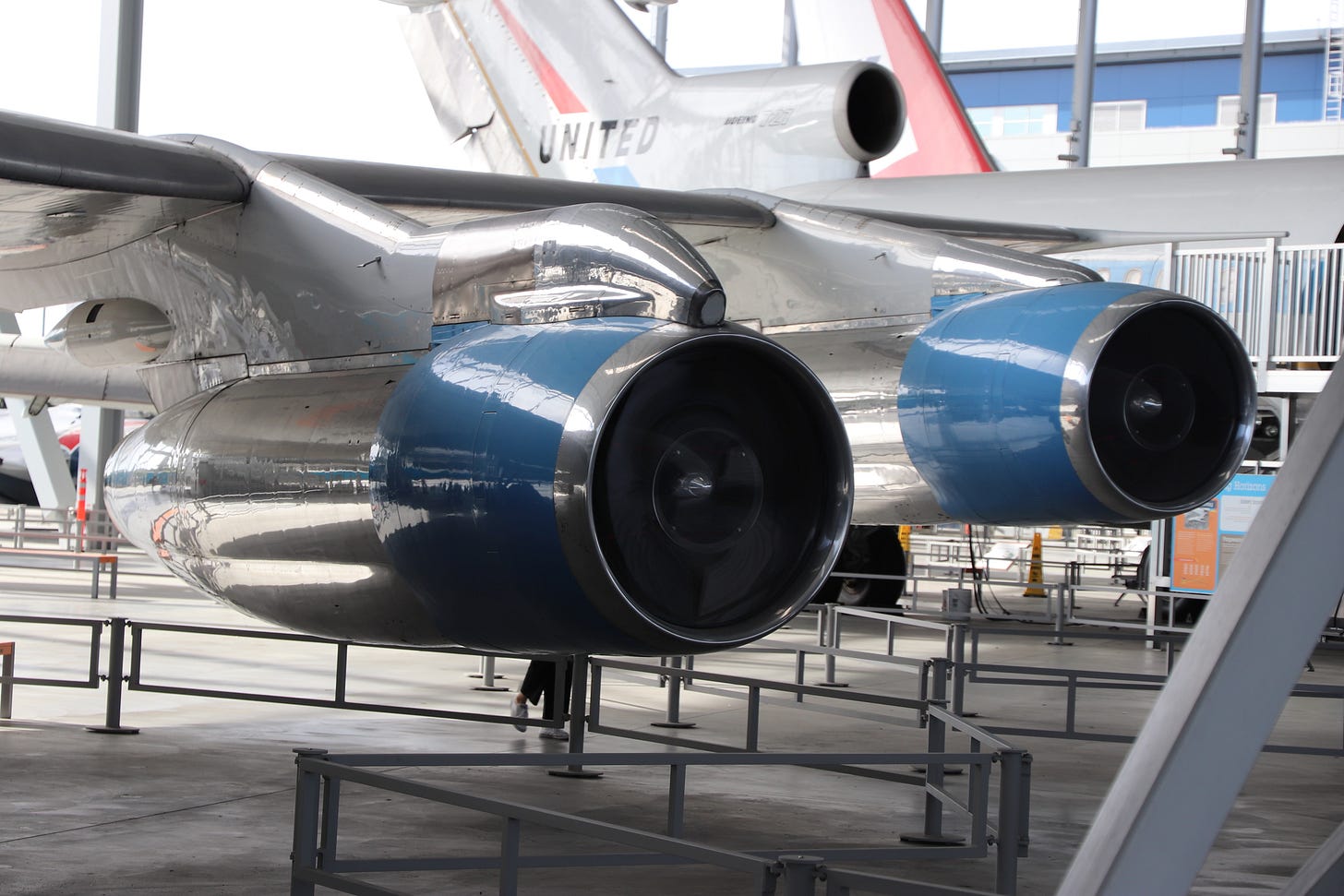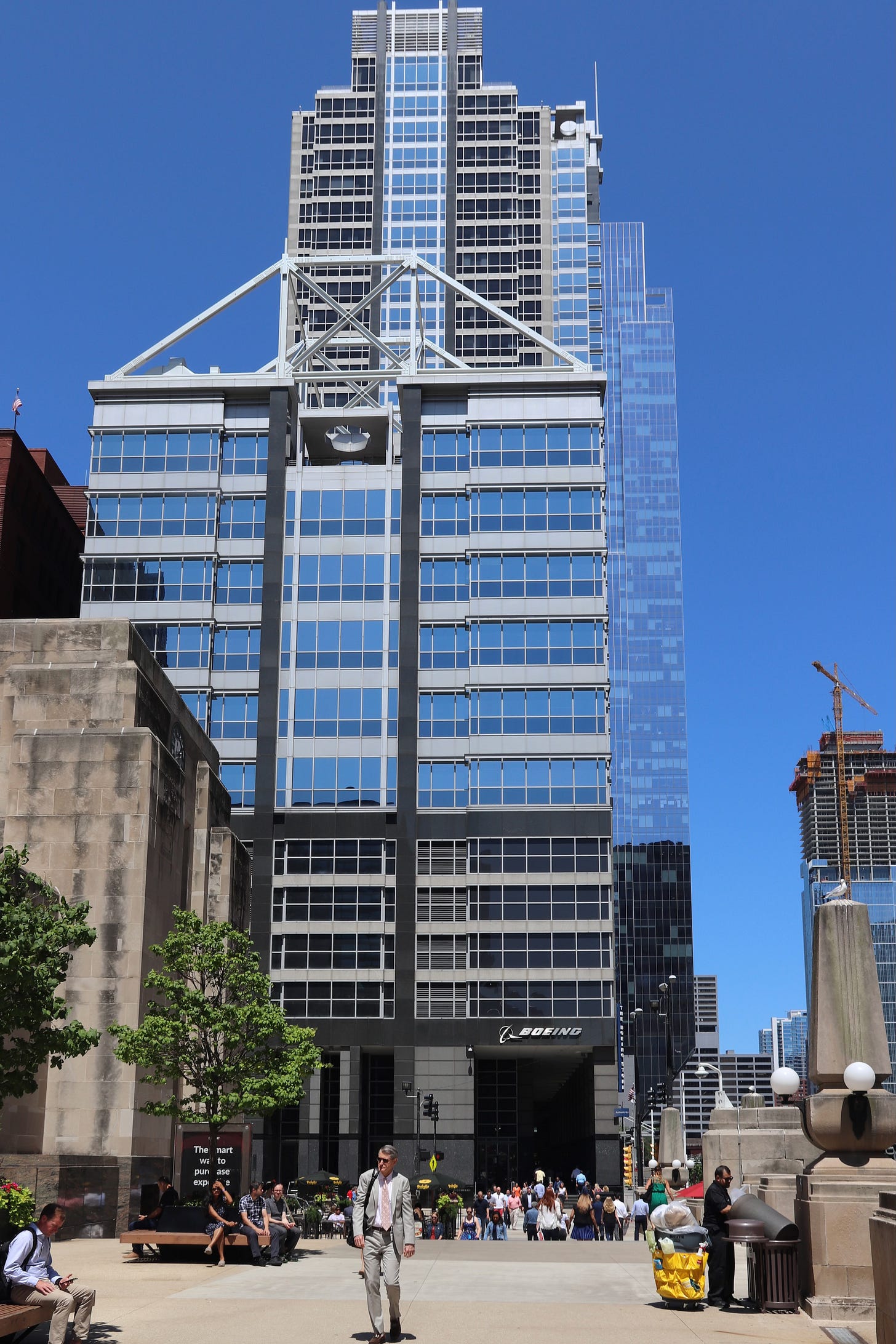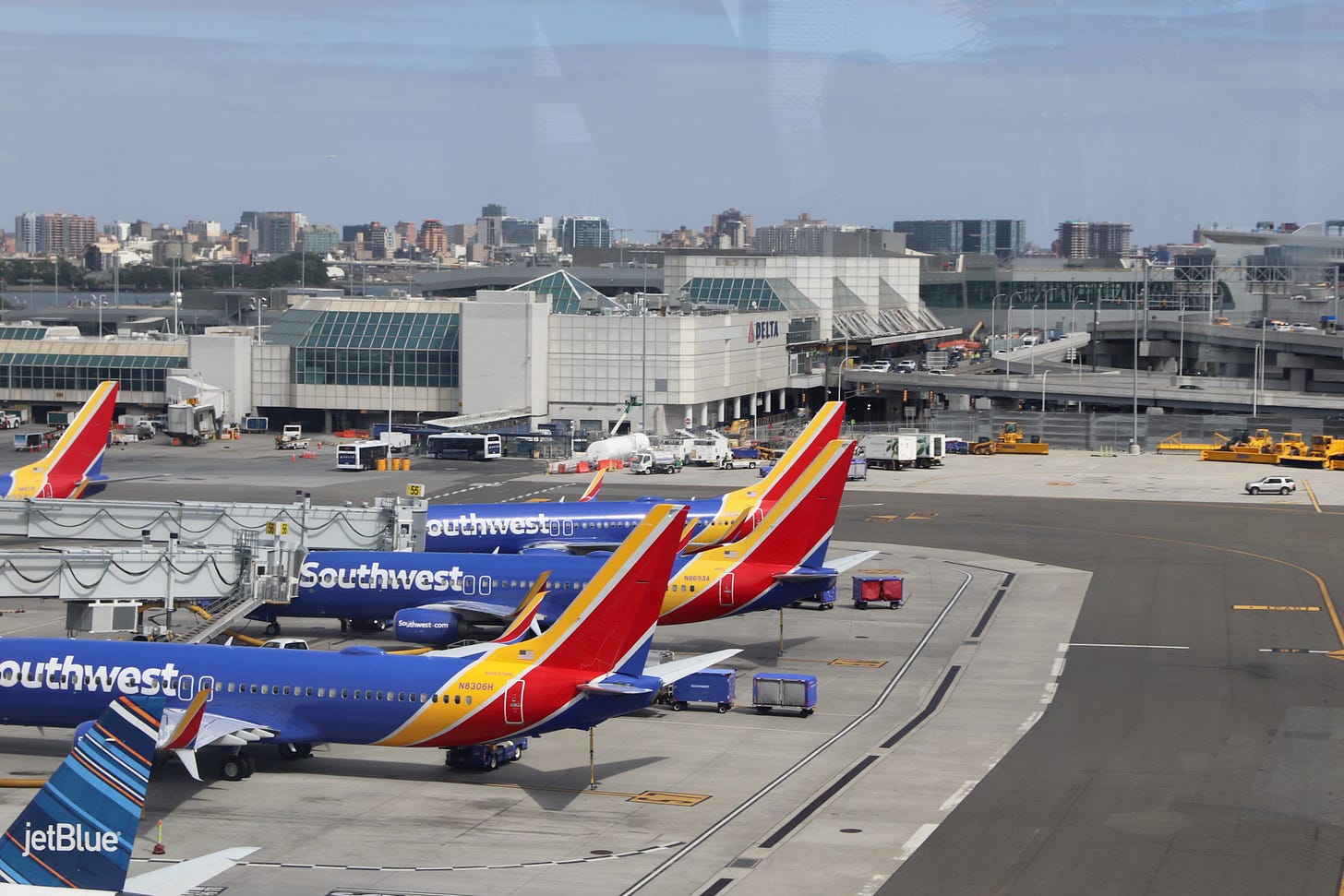To Revive Industry Learn from Boeing's Self Destruction
There's a lot of excitement about bringing back US industrial might. It can't happen without addressing the profits-only obsession that has taken many company victims, most prominently Boeing.

The 2018 crash of two airliners, one in Indonesia (in which 189 people died), the other in Addis Ababa, Ethiopia, that killed 157, may not seem to bear on the consensus that America needs to revive its hollowed-out industry—suddenly beloved of politicians across the aisles. Yet those crashes, and the flaws they revealed in the nearly new planes involved, were the consequence of plane-maker Boeing’s fealty to the shareholder-value obsession of U.S. business that has predominated since the 1980s.
As some of you may know, I am working on a book that examines the intertwining of city culture and successful and admired businesses—with Seattle as the backbone. Hence I have dived deeply into Boeing’s extraordinary success and its appalling downward spiral.
With the economy so high on peoples’ minds this election, Boeing’s story says much about America’s economic future.
A vibrant, innovative, and enduring industrial sector cannot grow without addressing the obsession with profits over all other considerations that continues to have much of American business in its grip. Boeing, which was long been America’s industrial leader, is the most prominent of the many victims of this shareholder-first mentality.
Its extraordinary success since transforming air travel with the first commercially viable jets in 1958. It had much to do with the way engineers in vast drafting rooms could walk over to the factory floor and solve problems with the machinists assembling the planes. The no-glamour corporate headquarters was embedded in Plant 2, in South Seattle. That proximity, and a shared quest for engineering and manufacturing excellence, forged a closeness that had long been one of Boeing’s secret weapons.
So what happened?
Boeing’s enduring success stood out amid decades of US industrial disinvestment that left a trail of abandoned factories and polluted land across much of the Northeast and Midwest. I grew up in Seattle when Boeing was the dominant employer and riding high. Its commitment to engineering prowess was woven into Seattle’s sense of itself as a place that hatched great companies which built quality products and aspired to great things. Boeing long has been—and perhaps remains for all its travails—America’s largest industrial exporter.

Boeing’s success came not just from an unwavering focus on safety but from a perpetual reconciling of quality with innovation, cost with speed to market. Every new model took years to design and test, and each had to perform for decades to be profitable. That is an exceedingly difficult balancing act, which is why there are only two global passenger jet makers.
Since the 1980s, the idea that markets should be unregulated and business should focus only on making money, attributed to the economist Milton Friedman, “was a simple and direct idea that took over business, banking, even corporate law,” Glenn Hubbard told me. He was a longtime dean of Columbia University’s business school. (The context was his desire to move the business school away from this obsession.) When profit is the singular obsession, however, all other considerations fall by the wayside, including investments in research, in advanced facilities, and in the workforce. This matters for all companies but especially one like Boeing, where such essentials as absolute safety of the product cannot be ignored.
The Jack Welch effect
A fateful 1997 merger with its gasping US competitor, McDonnell Douglas, brought the shareholder-value obsession and cost-cutting mentality of Jack Welch—hero of the shareholder-value crowd—to Boeing, even though it had failed at McDonnell. The merger was difficult and costly and the distracted company began falling behind its chief rival, the European Airbus consortium.
The new leadership decamped for Chicago, hundreds of miles from any of Boeing’s assembly plants—some observers argued that it was to distance itself from a labor force restive about shortcuts and engineers appalled at the dismantling of crown-jewel expertise. The disengagement of management from engineering and manufacturing would quickly manifest itself in a slowness to update its lineup as Airbus added new models that took market share away from Boeing. When it finally moved ahead on the 787 “Dreamliner,” Boeing again stunned Seattle by announcing that the new plane would be assembled in Charleston, S.C., about as far from Seattle as it was possible to be in the continental U.S.

The decision fit the prevailing liberal economic wisdom that deemed location meaningful only if costs were low and workers compliant. Management kept delivering profits if not airplanes: The Charleston decision, along with outsourcing (a favored tactic of the profit-obsessed) cost the company dearly in the development and early manufacturing of the 787. The company launched the Dreamliner four years late.
That model’s bumpy gestation distracted Boeing from the need to replace its aging 737, the workhorse of its fleet and the source of its greatest profits.
Fateful 737 decisions
With the plane having flown since 1968, a ground-up design was deemed essential by many in-house staff. In an ill-considered bid to catch up while spending the least, Boeing chose to spruce up the 737 with new engines but retained analog controls and printed guidance that Airbus had superseded in its competing A320 line. When some alarming flight characteristics manifested in testing, Boeing concocted a software workaround, called MCAS, but concealed from airlines and the FAA the degree to which the plane tended to dive in certain conditions, figuring, incorrectly that pilots would know how to disable it. The reason: to avoid triggering costly retraining that Boeing had promised airlines they would not need. Those cost-driven characteristics would prove fatal in the two crashed flights,
By this time, the company had devoted itself to moving its products out of the factory and into the hands of airlines as fast as possible—to the cheers of shareholders. Internally, Boeing people were either appalled at the shortcuts or laughed at the cluelessness of the FAA.
After the MAX crashes, Boeing pushed hard to get the grounded 737 MAX planes back in the air, but its decimated engineering and manufacturing capacity and its damaged culture kept falling short when it came to convincing airlines, the FAA, and Congress that the MAX was airworthy. No MAX planes flew for almost two years. Since then Boeing has struggled to restore a focus on safety, quality, and reliability.

Almost six years after the horrendous crashes, the company was knocked back on its heels again early this year when an improperly installed section of of a 737 fuselage flew off mid-air in a terrifying if luckily not fatal mishap. Only then was the C suite of Welch acolytes belatedly shown the door.
But the setbacks keep coming. Boeing can’t find a way, as of this writing, to end a costly strike by its unionized machinists who are furious at the costs passed onto them by incompetent management. The company’s debt is ballooning to an alarming degree. A sale or breakup of the former crown jewel of US industry is no longer inconceivable.
Vibrant industry needs a Wall Street reset
The financialization of the US economy is a massive barrier to large-scale industrial redevelopment. The MAGA crowd seems to envision the Monongehela River again lined with massive steel mills. (Dream on.) Democrats promote battery plants and solar-panel manufacturing—two industries dominated by China’s year-long singled-minded effort to become the lowest-cost producer of both.
Industry that is more innovative and future focused requires large upfront expenditures in research and in building facilities. These expenditures are anathema to the profit-obsessed crowd, because they reduce profits and dividends short term (short term being the only way these investors think). The investor class likes software because contracted (therefore disposable) software talent is cheaper, and no expensive factories are required.
Apple used to manufacture computers and printers in the US. Long ago it offshored such production to keep shareholders happy. The manufacture of the advanced glass in phones, tablets, and TVs has gone to Korea. The most powerful computer chips are designed in America but manufactured in Taiwan—a concentration of expertise that has boosted its economy but which is increasingly threatened by a restive China.
Management was fully responsible for Boeing’s near-death experience, but reviving a diverse, healthy, and innovative industrial sector, while worthy, will not succeed until the profits-only zeitgeist that ensnared Boeing is addressed. It’s not the only barrier to industrial growth, but it is a key one too little discussed.
It won’t be easy. These are the people who think diversity efforts and treating the workforce well are “too woke,” that environmental responsibility and concern for the communities in which companies do business is for suckers. There are policies in the tax code that over-reward predatory finance that must be changed.
The Friedman acolytes have become more strident and more right leaning. Their leading light is Elon Musk, who has united Tesla’s vaunted research, engineering, and manufacturing expertise in one “gigafactory”—very much in the old Boeing mode—outside Austin, Texas. But Musk has turned to Texas and also to Trump because he didn’t like California’s stance on transgender kids, its attempt to limit hate speech on X and other platforms, and limit disruptive rocket launches. He deems his will to power more essential than that of mere elected officials. Musk has become increasingly petulant and impulsive. He may get what he wants out of the MAGA crowd, but his increasingly unhinged behavior, as he expresses disinterest in Tesla’s future and immolates Twitter (oops, X), is hardly the model of industrial leadership America needs.
For those with deeper interest in the Boeing story there has been terrific reporting from many national outlets. A particularly damning summation is Peter Robison, Flying Blind: The 737 MAX Tragedy and the Fall of Boeing, Doubleday, 2021


This is a topic that interests me and which I will be exploring in some guest posts on the Corner Side Yard substack over the coming month, looking at several successful manufacturing firms in the Milwaukee area, and tracing their evolution through their beginnings, but with particular attention to what occurred during the era of suburbanization, deindustrialization, and globalization beginning in the 1960s. As with Boeing, I've also been struck by the degree to which New York City based philosophies (in particular, the Friedman Doctrine), companies, and financial "innovations" have impacted these companies, mostly for the negative. Many of the other challenges these companies experienced are attributable to policy decisions in Washington DC (Reagan's strong dollar policy, the Trump tariffs, etc.).
Doing this analysis, it's hard not to conclude that we are now witnessing the coalescence of the worst business practices and ideas of NYC with the equally bad business practices and ideas of Silicon Valley and being formed into a toxic cauldron of bad to disastrous economic policies in Washington, DC.
Thanks for this much-needed article. The profits-above-all-else concept has gotten us to where we are, supremely inflexible when it comes to doing the right thing for people, the environment and the future. Industry is ossified into in its profit-making one-note song while ignoring the real benefits of focusing on innovation, quality, and solving actual problems. On top of it all, the money that's been made is distributed unevenly with a few benefitting wildly and the rest simply having to go along. The increasing challenges of a fast-changing world, including from climate change, require us to be focused, flexible and creative in our efforts to re-tool. Being single-minded in amassing more and more money in the hands of a few is both frivolous and dangerous. It is the exact opposite of what we are capable of doing and creating.